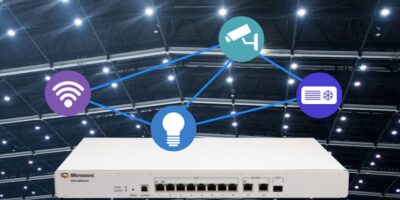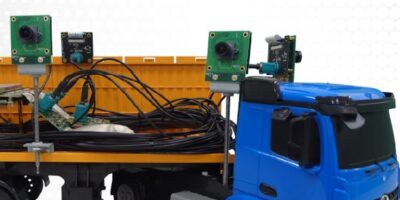An eight-port Power over Ethernet (PoE) switch released by Microchip guarantees 60W per port for all eight ports simultaneously. The PDS-408G PoE switch can be used for digital ceiling installations to run noiseless, fanless lighting designs.
In enterprise connected lighting applications, the PDS-408G connects separate systems such as lighting, sensors, heating ventilation and air conditioning (HVAC) and Wi-Fi access points over a single switch. Eight ports is deemed the optimal number for connected lighting and the PDS-408G can save energy and reduce operating costs, claims Microchip.
The PDS-408G complies with IEEE 802.3bt, the new PoE standard. It provides a total of 480W, including up to 90W for any individual port or 60W for eight ports simultaneously.
The PDS-408G is plenum rated and can be installed in any air handling space, and is fanless for noise-free operation in offices, hospitals and hotels. The PDS-408G also exploits PoE with safe power, simple installation, flexible deployment and remote power management features.
The PDS-408G PoE switch is available now.
Microchip offers an array of easy-to-use hardware and software tools to accelerate PoE designs, including the PIC18 PoE mainnboard, which features a PIC18 MCU, ATECC608A secure element and MIC28512 buck regulator.







